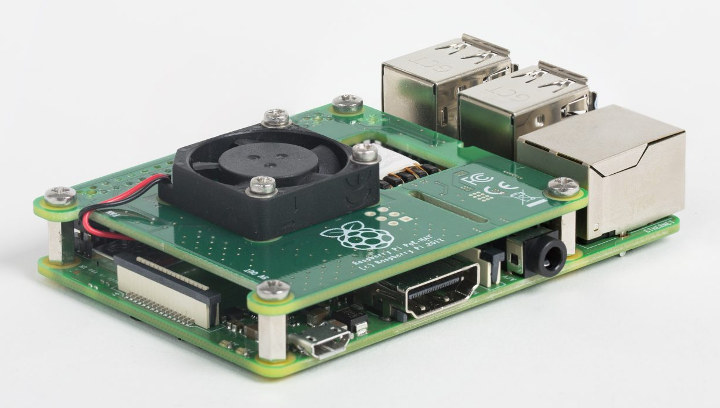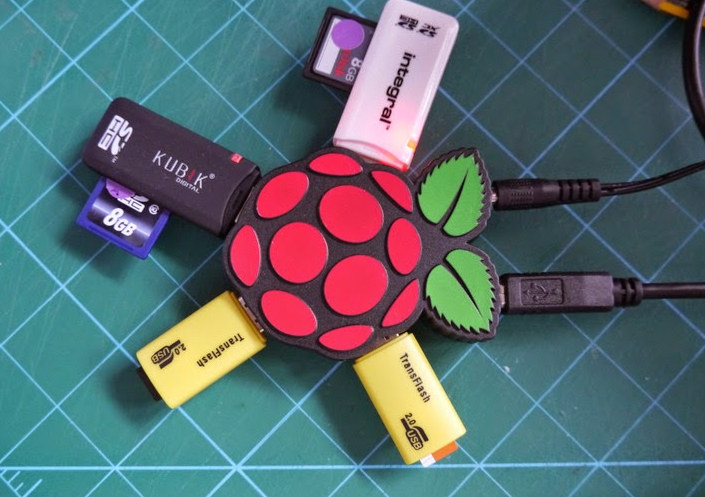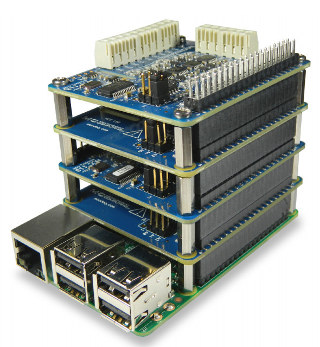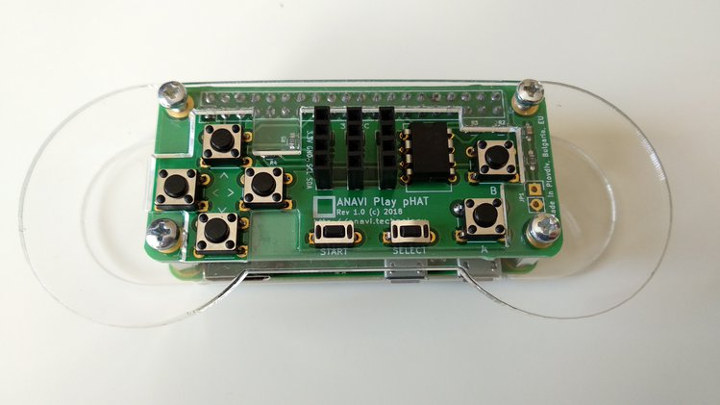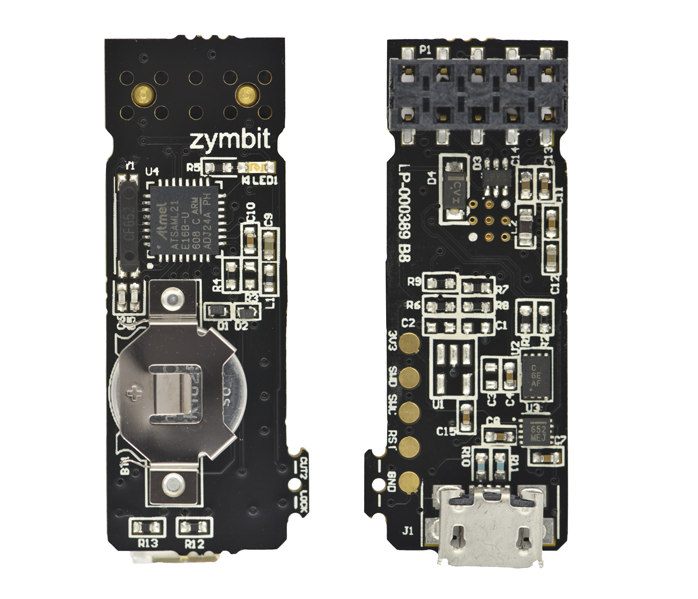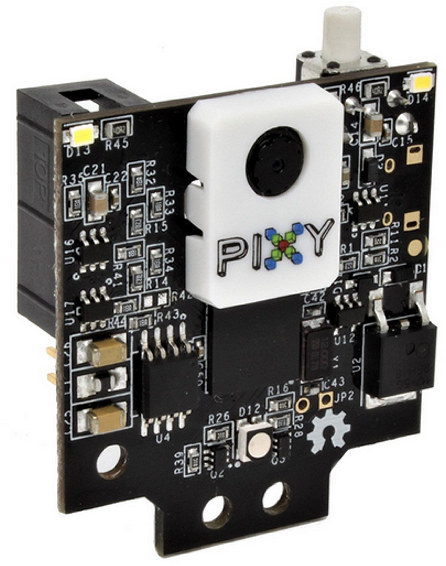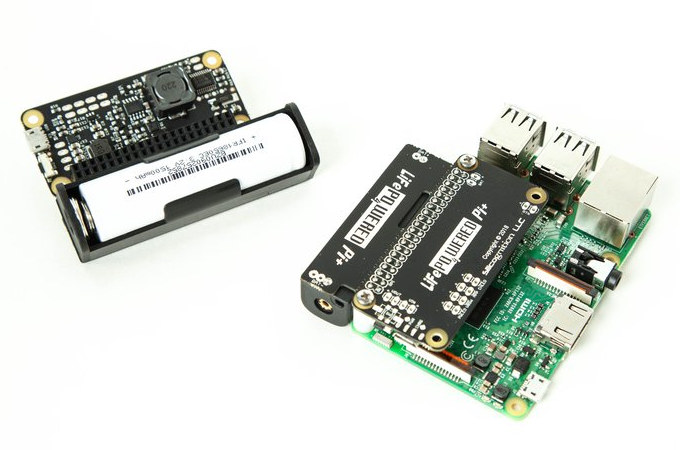The Raspberry Pi foundation has launched a good number of boards and accessories, and although some people will question some of the design choices, their boards were fairly bug-free hardware-wise at launch, except for minor issues like the board rebooting while taking a photo with a Xenon flash. Recently they also had performance issues with Gigabit Ethernet in the Raspberry Pi 3 B+ board, but that looks like more of a software issue. The Raspberry Pi PoE HAT announced with Raspberry Pi 3B+, but launched at the end of August for $20, however suffers from a more serious issue as it somehow limits USB current to 200mA instead of the usual 500mA, meaning that’s fine with USB keyboard and mouse, but as soon as you connect more power hungry peripherals like a USB hard drive, all hell breaks loose. Let’s check out the specifications first: 802.3af PoE Fully isolated switched-mode […]
How to Make a Low Cost DIY SD Card Duplicator
If you have to duplicate many SD cards for example to boot Raspbian on multiple Raspberry Pi board, one option is buy one of those SD card duplicators, but the problem is that they are not really cheap, for example the Systor 1-to-7 cards model sells for $540. Bob Brown, a retired senior lecturer, is now teaching K-12 students how to get started with Raspberry Pi boards, and must prepare bootable SD cards for his class. In order to save time, a duplicator would have been nice, but the price is too high, so instead he went with a DIY solution. You’ll first need some hardware, including a powered USB hub with the number of cards you want to duplicate, and corresponding SD card reader, and a larger micro SD card to hold Raspbian and/or other operating systems (optional, only for Raspberry Pi based duplicator). Mr. Brown made a 10-port […]
MCC 118 DAQ HAT Enables Up to 64-Channel Voltage Measurement on Raspberry Pi Boards
Measurement Computing Corp. (MCC) has recently introduced their MCC 118 DAQ HAT for Raspberry Pi which includes 8 analog inputs for voltage measurements between +/- 10V at a 100kS/s data rate. You can also perform data acquisition on up to 64 channels by stacking up to 8 MCC-118 DAQ HATs on top of a single Raspberry Pi board. The maximum throughput is limited to 320 kS/s. MCC 118 DAQ HAT key features & specifications: 8x 12-bit voltage inputs 100 kS/s max sample rate (320 kS/s aggregate for stacked boards) ±10 V input range Onboard sample buffers allow for high-speed acquisition External scan clock I/O External digital trigger input Screw terminal connections Up to eight MCC HATs are stackable on top of a Raspberry Pi board The data acquisition / data logger systems based on the add-on board would run Raspbian (Lite) on the Raspberry Pi board, as well as a […]
PiMecha Humanoid Robot Based on Raspberry Pi Sells for about $500
SB Components introduced PiMecha humanoid robot powered by a Raspberry Pi Zero (W)/ A+ / 2 / 3 (B+) board, and offering 17 degrees of freedom (DoF) on Kickstarter a few months ago. But with KS backers expecting their rewards in September, the company is now taking pre-orders on their own website for the robot for 399 GBP, or about $511 at today’s exchange rate. The company has apparently not published any detailed specifications of the robot on their website. But the robot is basically comprised of an outer shell comprised of removable metal pieces, and precise smartbus servo motors. Your chosen Raspberry Pi board would be fitted to the robot’s chest together with PiMecha shield add-on board handling the servo control. PiMecha can be easily customized with a Pi camera, an LCD display, your own sensors an so on. SB Components provide software to program the robot in order […]
ANAVI Play pHAT OSHW Board Adds 8 Buttons, I2C Headers to Raspberry Pi Boards (Crowdfunding)
Leon ANAVI has been learning KiCad open source EDA suite in his spare time, and developed several Raspberry Pi (p)HAT add-on boards such as ANAVI pHAT Light to control LED RGB strips, or ANAVI Infrared pHAT to handle IR signals. All his boards are open source hardware, and come with source code, and decent documentation as explained in the two aforelinked reviews. Leon has now come with another variant of his open source hardware certified add-on boards with ANAVI Play pHAT designed for playing games on the Raspberry Pi 3 / Pi Zero W boards, or other boards with a 40-pin header, thanks to 8 buttons, and just like his previous designs, three I2C headers are also included to connect sensors. Key specifications and features of the board: Gamepad with eight buttons for playing retro games 3x I2C header for sensors EEPROM with device tree binary overlay OSHW Certification – […]
Zymkey is a Hardware Security Module for Raspberry Pi Board
Microchip ATECC508A CryptoAuthentication chip appears to be a popular way to add hardware encryption support to development boards, as we’ve seen previously with 96Boards’ Secure96 mezzanine or LoRa explorer kit, and even just earlier today with Analoglamb Fish32 Seed ESP32 education board. Another solution is from Zymbit which provides Zymkey security modules for Raspberry Pi based on the ATECC508A CryptoAuthentication chip in different form factor: either a USB stick, an I2C module, or for further integration into your own design, an SMT component. Zymkey enables multifactor device ID & authentication, data encryption & signing, key storage & generation, and physical tamper detection. It also features a secure element root of trust, a real-time clock, and a true random number generator (TRNG). The company provides a simple Python or C/C++ API to make it easier to add Zymkey support to any Linux application, and the secure module can be integrated with […]
PIXY2 Computer Vision Camera Works with Arduino, Raspberry Pi, and Other Boards
Cameras may be used to take holiday photos, but when integrated into robotics projects there may purpose is usually to detect objects and/or patterns. We’ve previously covered specialized computer vision camera such as the Linux based JeVois camera powered by Allwinner A33 processor, HICAT.Livera machine vision board, or STMicro STM32F7 Arm Cortex M7 powered OpenMV Cam M7 open source computer vision board. Another popular option is PixyCam PIXY camera that was first launched via a Kickstarter campaign in 2013. The company has recently introduced an updated version, aptly named PIXY2, which can still detect objects – just faster at 60 fps-, and also includes new algorithms to detect and track lines or barcodes. PIXY2 camera specifications: MCU – NXP LPC4330 dual core Arm Cortex M4/M0 @ up to 204 MHz with 264KB RAM, 2MB flash Image sensor – OnSemi (previously Aptina) MT9M114 1296×976 resolution with integrated image flow processor Lens […]
LiFePO4wered/Pi+ is a Safer and Longer Lasting UPS for Raspberry Pi (Crowdfunding)
We’ve already covered several UPS solution for Raspberry Pi boards, but LiFePO4wered/Pi+ is a little different because instead of relying on LiPo (Lithium Ion Polymer) batteries, it comes with LiFePO4 (Lithium Iron Phosphate) battery which are said to be safer and longer-lasting albeit at the cost of lower capacity. LiFePO4wered/Pi+ specifications: Two battery size options: 18650 size – 1,500 mAh 3.2 V LiFePO4 cell with up to 2A max continuous load current 14500 size – 600 mAh, 3.2 V LiFePO4 cell with up to 0.75 A max continuous load current Smart charge controller – Over-charge protection, auto-adjusting charge current, customizable maximum power point (MPP) voltage Smart power manager: I2C communication Power manager and daemon – work together to ensure clean shutdowns and provide over-discharge protection Continuous monitoring – input voltage, battery voltage, output voltage, and load current On/off button Green PWR LED & Red CHRG LED Wake timer – Wakes […]


